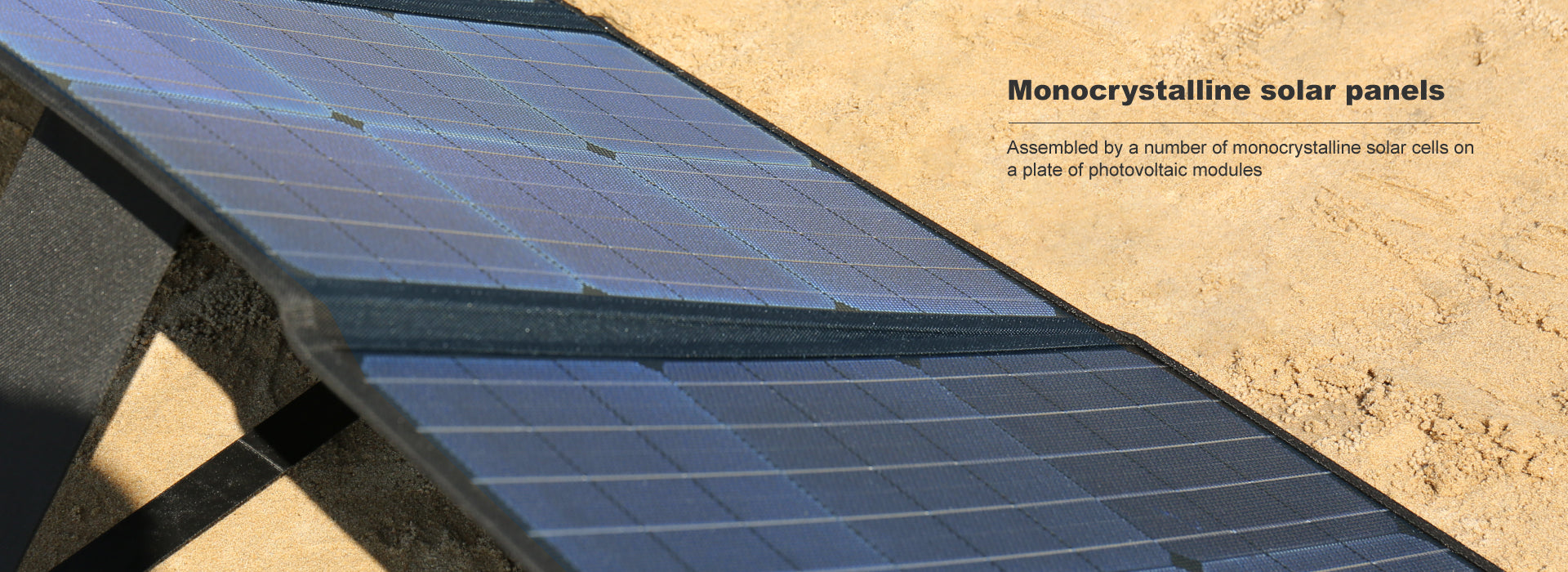Monocrystalline Solar Panels and Polycrystalline Solar Panels

At present, the common solar panels on the market can be divided into monocrystalline, polycrystalline, and thin film according to the cell type. Among them, monocrystalline and polycrystalline solar panels account for the mainstream market position. Faced with different panels, how should we choose them? This article will make a brief introduction to the two types of panels to help you pick the best panels to meet your needs!
What’s the Difference?
Monocrystalline solar panels - assembled by a number of monocrystalline solar cells on a plate of photovoltaic modules, each photovoltaic cell has a single crystal silicon. It is the highest photoelectric conversion efficiency of all types of solar cells, but the production cost is large and cannot be widely used for the time being.

Polycrystalline solar panels – this kind of solar panel has photovoltaic cells made of multiple silicon crystals dissolved. It has high light transmission and anti-aging abilities, but is not as efficient as the monocrystalline material.

Monocrystalline Solar Panels vs Polycrystalline Solar Panels
Efficiency
The photovoltaic conversion efficiency of monocrystalline solar cells is 18%-24%, and the photovoltaic conversion efficiency of polycrystalline silicon is 13-16%. In the same area, monocrystalline solar panels can convert more electricity than the polycrystalline.
Cost
The main factor in the cost difference between the two is the silicon structure. The production process of monocrystalline is more complex, expensive, and low yielding. The process of polycrystalline is greatly simplified, and the consumption of silicon material is relatively less, so the production cost of polycrystalline cells is more advantageous.
Lifetime
Both monocrystalline and polycrystalline panels are made of "silicon", an abundant and very durable element, so both have a good lifespan and stability, with no significant differences in daily use.
Portability
Portability is an important consideration if you need to use it in outdoor scenarios such as camping or RVing. The high conversion rate of monocrystalline cells means that for the same energy yield, monocrystalline solar panels require fewer panels and are smaller and lighter.
Appearance
Aesthetics depend on people's personal preferences. Monocrystalline panels have a more uniform texture, with an overall black color and rounded corners; polycrystalline panels have an ice-like pattern on the surface and square corners on the four corners of the cell, which has a scattered appearance.

Which Panel is More Suitable?
There are different adaptable panels for different usage scenarios.
Outdoor Activities
If you are an outdoor enthusiast who loves camping or RV travel, Monocrystalline portable solar panels will be your best choice. Monocrystalline solar panels have the advantage of being smaller and lighter, and can convert more energy in a short period of time to last for your journey. If you can, try to choose a folding panel with a handbag design that will make your journey easier.

Home Backup Power
If you have a home storage solar power station, the high flexibility of monocrystalline solar panels can help you meet your daily electricity consumption with faster charging during grid failure, and its portability can expand the use to the perimeter of your house instead of limiting it to the inside.

Rooftop
If you want to install PV on your roof, you can ignore the portability feature. In terms of cost savings, polycrystalline solar panels can save more money, but the efficiency of the power generation will be slightly compromised. As for the appearance, you need to choose whether you prefer a clean and simple or more prominent appearance according to your personal preference.

Conclusion
After a comparison of monocrystalline solar panels and polycrystalline solar panels, it can be found that monocrystalline panels are better in terms of power generation efficiency and portability, while polycrystalline panels are more favorable. Its all a matter of lifestyle and preference, so think carefully before making a purchase.
Leave a comment